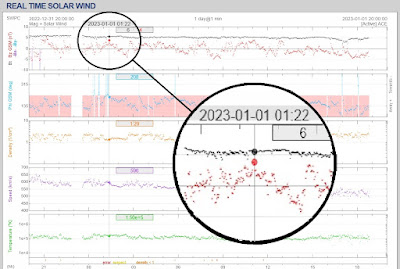Still not much going on with ham radio here. I get on every once in a while when there's an opportunity to work a new one and fortunately, that still seems to happen every now and then.
Right after my last post about working FT8WW on Crozet Island I finally had another opportunity to work Burundi, my last needed country in Africa. This has been a surprisingly long quest! I first worked Burundi back in the nineties but the station I worked ended up having some paperwork issues and the DXCC credit was removed. An expedition in 2017 coincided with terrible radio conditions and I just wasn't able to hear them. Fortunately, in early 2023, another expedition went to Burundi and this time (Long live FT8 mode!) I had no trouble putting the 9U5R/9U4WX team in the log for #324.
I guess I'm starting to get used to missing Bouvet Island. I wrote about the aborted 2018 Bouvet operation. Big ships and helicopters (mostly fuel for big ships) requires a lot of money and that failed operation cost the operators, sponsors, and contributors (like me!) a cool half a million dollars. Another operation to Bouvet in 2023 had a different approach. They figured instead of helicopters they could land on a tiny beach to get ashore with all their equipment but it was not to be. The beach ended up being too rough for landings. In desperation, a few team members were able to swim ashore in survival suits and float some equipment in but all the big generators, amplifiers, and antennas they brought had to stay on the ship. Suffice to say, the puny signals from their barefoot radios and wire antennas never made it this far north and I missed Bouvet AGAIN! However, the same team is going to have another crack at it in 2026 (this time with a helicopter) and Peter I Island in 2027 which is also on my 'needed' list. Fingers crossed third time will be the charm!
A relative newcomer to the DXCC list, Swains Island was first on the air in 2007 and then activated by a larger group of operators in 2012. I was right in the middle of moving at that time and I missed it completely. After a two-year delay due to the pandemic, in October 2023 another team activated Swains again and I was able to work them for #325. Conditions were excellent at the time and I got them on every band from 160m to 10m and all three modes too!
Last year, Marek FH4VVK was able to secure permission to operate from Glorioso Island. The previous expedition to Glorioso was FT5GA in 2009. I recall being somewhat annoyed at the huge volume of DX spots generated for that operation and presumed at the time (almost certainly incorrectly!) that there was not a chance I'd be able to hear them so I never even tried. This time, FT4GL was on the air at the end of May/early June. Conditions weren't great but I was able to catch them on 17m for a quick "one-and-done" to get my #326.
This past January saw a "pop-up" (not previously announced) dxpedition to Mount Athos! The very last European entity I needed, it was only put on the air infrequently by a couple of resident monks at the Mount Athos monastery in Greece. For hams in western North America it was high on the "Top 10" list of most-wanted entities. It had been added to the DXCC list due to a rules quirk in the early 1970's and has since been "grandfathered" in. Permission to operate for hams other than the resident monks was almost always refused and rivalries between the local Greek hams and the various monasteries on the mountain made sure the situation stayed that way. Nevertheless, in January this year, a small group (including famed dxpeditioner Martii OH2BH) was able to get authority to operate and immediately went on the air. Astonishingly, those previously mentioned rivalries managed to get the operation shut down after only a couple of days and all the operators arrested! The team was able to demonstrate to the authorities that their authorization was valid under Greek law and they were released but were not able to continue the operation. For a couple of months afterwards there was a lot of rumours and innuendo but surprisingly, in April the DXCC Advisory Committee approved SV1GA/A for DXCC! It was a very short operation but luckily I had been able to catch them on two bands for my #327

Dxpeditions to three of the four more I need for DXCC Honor Roll (out of only 13 total remaining) have already been announced for the next couple of years so I'm not going anywhere yet. Who knows what the future holds but I'm only a year and a half away from retirement. I'll have a lot more time to play radio then!

















